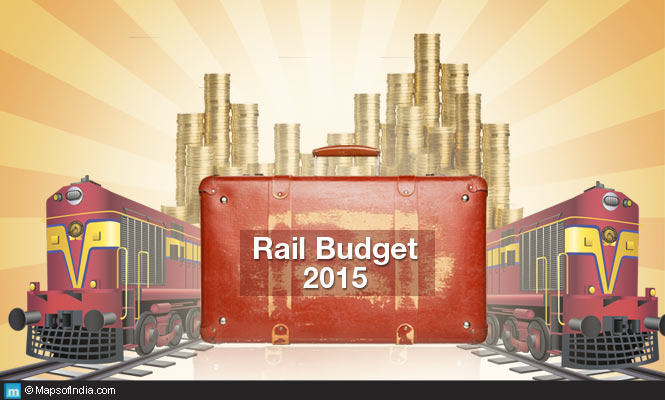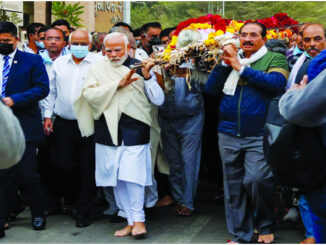
New Delhi (TIP)- How will the third Narendra Modi government differ from the two previous ones that came to power in 2014 and 2019? The answer will lie in the composition of the Eighteenth Lok Sabha. Here are a few things that will change.
After a decade, back to days of coalitions at the Centre
For the better part of the last 34 years, India has been governed by a coalition of political parties. It is only in the last 10 years that a single political party — the Bharatiya Janata Party (BJP) — led a majority government at the Centre, crossing the halfway mark in the Lok Sabha elections of 2014 and 2019. Be that as it may be, the biggest structural reforms and rights-based programmes happened during the last 30-plus years, the seeds of most of which were sown during the coalition era.
The BJP had won or was leading in 240 seats at midnight on Tuesday, short of the majority mark of 272 by a long way. It will have to depend on its pre-poll allies, the top four being the Telugu Desam Party led by Chandrababu Naidu, the Janata Dal (United) led by Nitish Kumar, Shiv Sena led by Eknath Shinde, and Lok Janshakti Party (Ram Vilas) led by Chirag Paswan.
The TDP had won or was leading at 16 seats, the JD(U) had won 12, the Shiv Sena had won 7, and the LJP (Ram Vilas) had won 5 seats. Together, these parties will bring 40 seats to the NDA. The BJP will need all these seats to comfortably go past the half-way mark of 272.
The (undivided) Sena and JD(U) were BJP allies earlier too, but with a crucial difference. Their withdrawal of support would not jeopardise the NDA government, given that the BJP on its own had 282 seats in 2014, and an even higher tally of 303 seats in 2019.
So, when Uddhav Thackeray, whose Sena had been a BJP ally with a similar ideology since 1989, and had won 18 seats in the Lok Sabha election of 2019, pulled out of the alliance after the 2019 Assembly polls in Maharashtra, the BJP-led government at the Centre was not affected.
Similarly, the Akali Dal, another long-term BJP ally since 1996, pulling out of the alliance during the farm protests in September 2020 did not matter.
Not anymore. Now, BJP will have to listen to its allies, because they will be key to the stability of the government at the Centre.
Not just that. Given the smaller difference in seat tallies in the new Lok Sabha, the rival INDIA bloc will have a better chance at putting the government under pressure should some NDA allies break ranks and cross over.
Both Rahul Gandhi and Congress president Mallikarjun Kharge did not rule out the possibility of approaching the BJP’s pre-poll allies for a shot at forming the government.
The new and old allies will seek Cabinet berths — maybe important ones, that could impinge on the BJP-led government’s flexibility in policy-making.
And the BJP may be required to revisit its coalition dharma. It will have to call periodic meetings of its allies for temperature checks; it will need to get them on board before deciding on hot button issues such as Uniform Civil Code, delimitation of constituencies, judicial reforms, and ‘one-nation, one-election’. In short, the party will have to reset the framework of running a genuine coalition government, and devise mechanisms to accommodate the sensitivities of other parties with their own ethos and ideologies.
Rise of regional leaders
From the North to the South, East to West, regional leaders have re-emerged to exert influence in the national polity. Chandrababu Naidu will get to wield clout as the Chief Minister of Andhra Pradesh, and as a key partner in the BJP-led government at the Centre. Samajwadi Party’s Akhilesh Yadav will now be heard loud and clear in not just the Uttar Pradesh Assembly, where his party with 108 seats out of total 403 has a significant presence, but also in Parliament.
The Samajwadi Party (SP) has trumped the BJP in Uttar Pradesh, the state that contributed 72 seats to the party’s tally of 282 in 2014. The SP had won or was leading in 37 seats in the state that contributes the largest number of MPs — 80 — to Lok Sabha.
The BJP had won only 33 seats, its strength almost halved from the 62 of 2019. In fact, the SP will be the the third largest party in Parliament after the BJP (240) and the Congress (99).
Mamata Banerjee’s Trinamool Congress (29 seats), M K Stalin’s Dravida Munnetra Kazhagam (22), the Shiv Sena (Uddhav Balasaheb Thackeray) with its 9 seats, and the NCP (Sharadchandra Pawar) with 7 will lend their voice to regional aspirations, and mount pressure on the Central government by speaking up in Parliament.
The Trinamool’s performance in the election, winning 7 seats more than in 2019, could mean that Mamata has managed to stall the BJP’s juggernaut in West Bengal, at least for now. And the DMK-led alliance has retained all 39 seats in Tamil Nadu.
The verdict in Maharashtra suggests that the people have stood by Sharad Pawar and Uddhav Thackeray, who suffered BJP-supported splits in their parties. The state goes to Assembly polls later this year in October, and the Maha Vikas Aghadi alliance of the Congress, Sharad Pawar’s NCP, and the Uddhav Sena is well placed to make a strong bid for power.
Recalibration of power balance, among BJP-RSS and within BJP
Given that the Lok Sabha elections in 2024 too were centred around Prime Minister Narendra Modi, with a high-decibel ‘Modi ki guarantee’ campaign, the burden of a lower tally will inevitably fall on him. Leaders will not speak openly against the Prime Minister, and will continue to rally around him, but it is bound to reflect in the party’s power structure.
What has not gone unnoticed is the performance of Shivraj Singh Chouhan, who delivered a clear majority for the BJP in the Assembly elections just six months ago, and has now ensured a clean sweep in Madhya Pradesh with all 29 Lok Sabha seats falling into the BJP basket. Chouhan has won his own seat, Vidisha, by a staggering margin of 8.21 lakh votes.
Modi may not only have to accommodate but also actively deploy moderate voices to expand his acceptability in the coalition government and in Parliament, which will represent a wider political spectrum than before.
When the new Cabinet is constituted, Modi may not have the kind of free hand he had in 2014 and 2019. RSS, the ideological parent of the BJP, which works quietly on the ground for the party, may put forward its own suggestions.
The BJP, which has grown in strength over the past decade, did not necessarily consult the RSS on government affairs. BJP-RSS relations during the NDA government under Atal Bihari Vajpayee had been starkly different. The RSS claims that it does not seek power, but it has always influenced the political agenda of the party.
Federalism will matter more, expect greater accountability
The oft-repeated slogan of “double-engine sarkar” to garner votes during Assembly elections in states has been seen by the opposition as an affront to federalism, a basic tenet of the Constitution.
For effective and optimal functioning of a state, the same party need not be in power at the Centre as well as in the state. The DMK in Tamil Nadu has a distinct Dravidian ideology or the SP in Uttar Pradesh may seek to actively improve the lives of minorities or backward classes, but the shrill politics of “double-engine sarkar” often ended up pitting the Centre against the states, particularly those ruled by the Opposition. In India’s immense diversity and federal polity, the imposition of a unitary vision or formula is often unsuitable.
Accountability is likely to increase in all institutions from the judiciary to the auditor, from financial regulators to the election watchdog, and even the investigative agencies. A coalition lends itself to better checks and balances, infuses oxygen into the ecosystem, and gives institutions space to innovate and push back against top-down policies of the political executive.
Source: The Indian Express





Be the first to comment